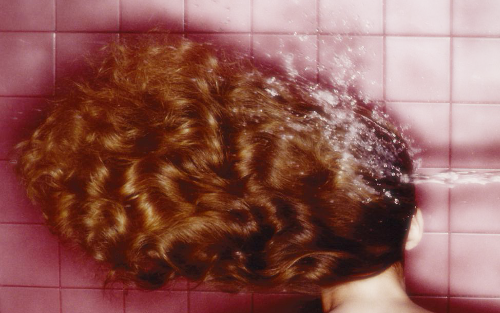
If you search Google for “Chemotherapy Hair Advice” you will find loads of excellent articles (esp. NHS .pdf documents) detailing the procedure and hair issues. However, I would like to share some of my thoughts and give you a bit of hairdressers chemotherapy hair advice!
Like most of us, I’ve known a number of people who have had chemotherapy, quite a lot actually; but as a hairdresser, I’ve taken a very keen interest in their hair and the advice that’s been given to them by their supporting team.
Chemotherapy Hair Advice
- The normal daily average hair loss for everyone (you & me) is about 100 hairs. I say that because: When using the cold cap it is my understanding that chemotherapy slows hair growth. Therefore: if you are undergoing chemotherapy over a period of, say, twelve weeks, by the end of the treatment, and beyond, your hair WILL get thinner – that would be absolutely normal, even if you didn’t get extra hair falling out due to the chemotherapy. And just like postnatal hair loss, your hair will grow back.
- Handle with care – To prevent your hair from being Pulled out, don’t pull it! Sounds like stupid advice, but ‘hair dynamics’ could mean that even long dirty hair, or hair wrapped around super soft sponge rollers, is being put under too much force / stress and may be pulled out. Think about what pulls your hair, and don’t do it.
- Pony-tails must be kept very loose, and always use non-metal hair elastics like 4mm Blax Snag Free Hair Elastics or a ribbon.
- Obviously, don’t get all your hair cut off! Play style and length by ear, but I would recommend getting your hair cut in a style so you can allow it to dry naturally. And that usually means: medium short. It’ll make life much easier for a whole load of reasons.
- How to wash your hair during chemotherapy: Wash it twice a week as a maximum. Use lukewarm, tepid water. Apply a very small amount of shampoo to the scalp/hair roots and very gently massage – don’t worry too much about the ends. Only give one wash, rinse very thoroughly. Pat hair dry, don’t rub with towel.
- Don’t wash your hair under a power shower.
- Always use a very small amount of conditioner (for normal hair) (whether you need it or not) and comb your hair Very Gently under the running water.
- Personally, I would recommend that you don’t use leave-in conditioners, or any product that is normally left in your hair like: hairspray, setting lotion, gel, mousse and wax, dry shampoo, volumising and shine shampoo, etc., because they may cause product build-up.
- One of my clients said, the current advice is to not wash your hair 2 days before or 2 days after chemotherapy.
- Use a pure, mild, acid balanced shampoo and conditioner (PH about 5.00 – 7.00). I like Timotei Pure Shampoo contains no silicones, parabens or colourants. Does contain Sodium Laureth Sulfate. On the other hand, I recommend Urtekram Children’s Shampoo and conditioner, get it from Amazon.co.uk.
- Please be aware that the name baby or children’s shampoo, doesn’t necessarily mean mild and acid balanced – some of them are alkaline (above PH 7)!
- Parabens are preservatives and are used to restrict the growth of yeasts, molds and bacteria.
- Sodium Lauryl Sulphate (SLS, Sodium Laureth Sulfate, SLES) – an oil dispersant, detergent and surfactant, it is used in soaps, shampoos, toothpaste, and hundreds of cosmetic and beauty products. Personally, I wouldn’t worry about it too much.
- Don’t leave any shampoo or conditioner on your scalp or in your hair, always rinse thoroughly.
- Most hairdressing products are designed to be rinsed out.
- If your hair gets very knotty, comb your hair from the ends first and work your way towards the roots. Never, ever, tug.
- If you really need to dry and style your hair with a hair-dryer: use the lowest heat setting, gentlest speed and for God’s sake take off the nozzle.
- All my hairstyles can be dried/styled by just using your fingers, hands; you don’t need to use brushes, they tend to catch and pull.
- Feed You Hair, Eat A Rainbow: Diet doesn’t only effect your health, but also your hair – feed it! Eat: peppers, sweet potatoes, carrots, spinach, mango, papaya, apricots, blueberries, sardines, salmon, pumpkin & ground flax seeds, walnuts and wheat germ – I’m talking, lots of multi-coloured fruit and vegetables, oily fish, nuts, seeds and grains.
- I advise you to:
- Leave longer for your hair appointment, so I can take my time to be gentle with your hair.
- Try having your hair cut dry, without washing. It makes no difference to me or the outcome of your style, but it may help your hair a little? Wash it after the cut and allow it to dry naturally.
- Still have your hair cut every four to five weeks, it’s important to keep your hair at the optimum length, plus I can keep an eye on the condition of your hair.
- Obviously you must avoid all permanent tinting, permanent waving (all chemical processes) until at least three months after your chemotherapy treatment finishes. However, there is such a thing as a water rinse (they’re like the old fashioned coloured setting lotion): Roux Fanci-Full Temporary Rinse. They’re great for toning down and blending gray hair and roots. And just like a setting lotion they wash out.
- Have a gander in Waitrose for your hair care products, they’ve got a very good selection. Don’t confuse Waitrose Pure Shampoo for Timotei Pure Shampoo.
That’s it! If you would like to talk with me personally, please get in contact x

